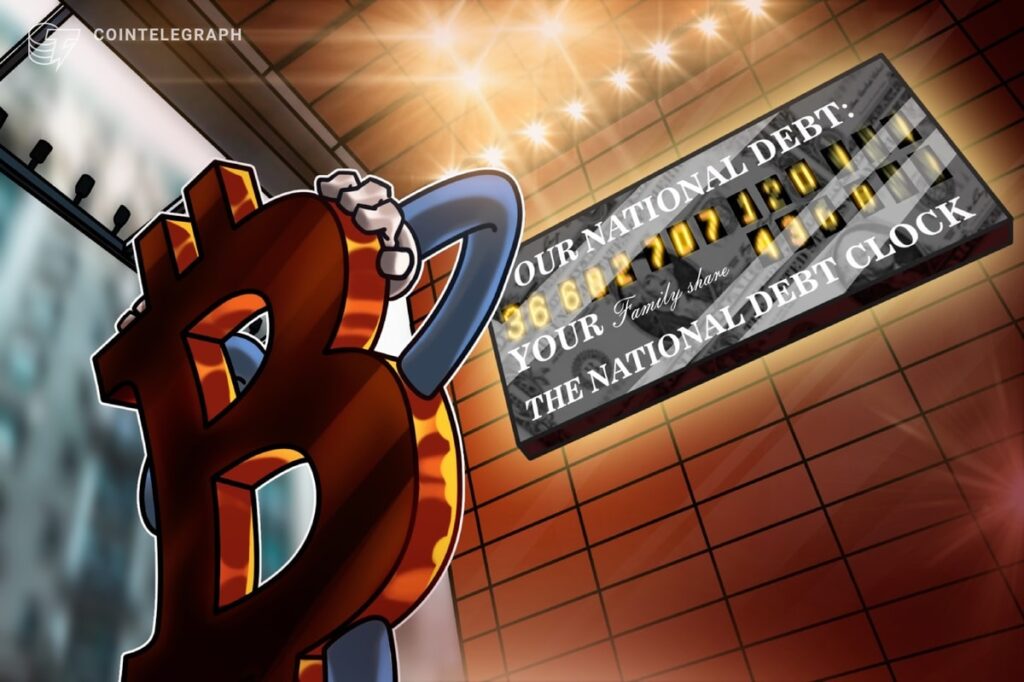Key takeaways:
-
Exploding US debt and housing market stress could trigger a sharp BTC correction toward $95,000.
-
Bitcoin’s price remains closely tied to macro trends, including Fed policy and institutional flows.
The United States’ gross national debt increased by $367 billion on Monday, reaching an all-time high of $36.6 trillion. The surge followed US President Donald Trump’s approval of the “One Big Beautiful Bill,” which raised the debt ceiling by $5 trillion on Friday. Could this be the trigger for a Bitcoin (BTC) crash to $95,000?
Analysts, including Kurt S. Altrichter, CRPS and founder of Ivory Hill Wealth, have raised red flags about the US housing market. A powerful metric that typically spikes during past economic downturns has now reached alarming levels, according to Altrichter.
The inventory of new single-family homes is approaching 10 months’ worth of supply. According to Altrichter, this “has only occurred during or right before recessions.” He asserts that the weakness in housing stems from high interest rates but, more importantly, from what he calls “demand evaporation.”
If this historical pattern—linking housing oversupply to broader economic decline—holds true, the impact could weigh on risk-on assets, including Bitcoin. Even if the long-term effect proves positive for crypto, the immediate reaction from investors tends to be risk aversion, favoring cash and short-term bonds.
Jack Mallers, co-founder and CEO of Strike, noted on X that the only viable option for the US Treasury is to expand the monetary base—an action akin to printing money. Mallers argues that the government is unlikely to default on its debt, meaning debasement becomes the final resort. This, he suggests, creates an ideal environment for a Bitcoin rally.
Bitcoin’s fate depends on the US Federal Reserve’s actions
There’s also a counter-narrative: some market participants believe Bitcoin’s breakout above $112,100 on Wednesday is unrelated to fiscal issues or recession fears. Instead, they attribute the broader stock market rally to expectations of policy shifts at the Federal Reserve.
Speculation is also growing around President Trump’s potential push to replace Fed Chair Jerome Powell. If successful, the move could lead to more dovish monetary policy. Trump has repeatedly urged the Fed to lower interest rates. According to Fox Business, he is currently vetting candidates to succeed Powell, whose term ends in May 2026.
Despite strong net inflows into Bitcoin exchange-traded funds (ETFs) and rising institutional demand, BTC remains closely tied to broader equity markets.
The correlation between Bitcoin and the S&P 500 stands at 68%, meaning both asset classes have presented similar price trends. The ongoing US import tariffs are another risk factor, potentially hurting corporate earnings, especially in the tech sector, which is heavily reliant on global trade.
Related: Bitcoin data points to rally to $120K after pro BTC traders abandon their bearish bets
Nvidia (NVDA), which became the world’s most valuable company with a $4 trillion market cap on Wednesday, could be particularly exposed. It’s difficult to predict whether escalating trade tensions will spark a steep decline in tech stocks. While raising the debt ceiling often boosts risk-on sentiment, the threat of a recession may trigger a Bitcoin correction to $95,000.
Ultimately, a new all-time high for Bitcoin in 2025 remains plausible, as noted by Strike’s Jack Mallers. But for now, traders appear to fear whether the AI-driven tech sector will weather the trade conflict.
This article is for general information purposes and is not intended to be and should not be taken as legal or investment advice. The views, thoughts, and opinions expressed here are the author’s alone and do not necessarily reflect or represent the views and opinions of Cointelegraph.
